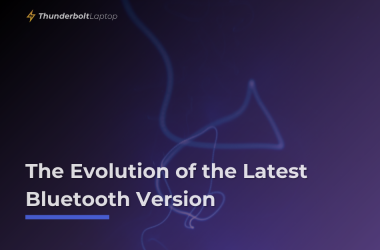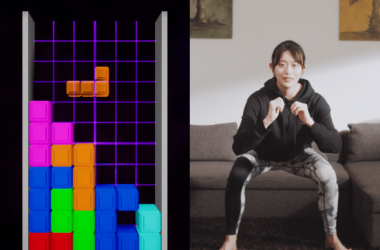In our last article, we dealt with monitor response times and how it becomes crucial while gaming. We realized the criticality of the response time of a monitor and how Ghosting and Motion Blur can severely affect your gameplay if the response time of your monitor is high. You can read all about that here.
An obvious solution is going for a monitor with a combination of low response time and a high frame rate. You could also request a trial run of the monitor in the store, play a fast-paced video clip, and look for ghosting trails and motion blur.
However, did you know that some monitors support variable response time?
These monitors have a feature called Overdrive, through which you can change the response time of the panel. The on-display-settings menu on the monitor allows you to improve the response time of the display. Not all monitors have this feature, and the ones that have are priced a few notches higher than monitors where the response time is fixed or factory calibrated.
Let us understand monitor response time and how you can use Overdrive to reduce or even eliminate motion blur and ghosting issues on monitors with a high response rate.
Table of Contents
What is Monitor Response Time?
Although we covered monitor response time in detail in our last article here. Let us do a quick recap for those who missed it.
Monitor response time is the time taken by the pixels on a display to change colors from black to white and vice versa. The faster is the response time of a monitor, the more rapid is the color switch. Monitor response time is measured in milliseconds, and ideally, a gaming monitor should have less than five millisecond response time. The objective, however, is to hit the 1-second mark as going zero is not possible as per the prevailing advancements in technology.
While not universally true, we usually find the best response time from monitors with TN panels that suffer from viewing angle and color reproduction issues. Next, come the VA panels that typically try to balance between response time and color quality. Finally, IPS panels have the highest response time but excel at viewing angles and color coverage.
How Does Response Time Affect Gameplay?
Professional gamers prefer monitors with low response time as their objective is to win than enjoy the game and its cinematics. If the response time is high, a monitor suffers from Ghosting and Motion Blur, and hence, professional gamers prefer to game on monitors with TN panels that are known to have a low response time.
Ghosting and Motion Blur can become a massive distraction for gamers who rely on their lightning-fast reflexes to counter the enemy’s moves. Response time and refresh rate are a combination where one complements the other. Monitors with a high refresh rate and low response time have a positive impact on gameplay.
What is Overdrive on a Monitor and How does it Work?
Many professional-grade monitors from reputed manufacturers come with an Overdrive setting in-built that can be accessed from the on-screen-display (OSD) menu. Overdrive is a feature that and pushes the limits of the monitor to compensate for ghosting and motion blur and hence reduce their effects. OSD settings are there in almost every monitor, but not all of them offer enhanced capabilities in addition to the regular brightness, color, and dimension settings. Usually, a feature-rich gaming monitor is equipped with enhanced Overdrive capabilities.
In LCD monitors, liquid crystals move when voltage is applied. This movement causes light to pass through. The angle of movement is different in IPS, VA, and TN panels. During Overdrive, a higher voltage is applied to the crystals causing them to move faster and increase the response time of monitors from the preset levels. As a result, the pixels change color much more quickly, and the monitor’s response time is significantly improved.
Overdrive settings let a user tweak the response time of the display according to the content being displayed. Though not universally true, there are usually 3-5 levels to choose from, and each level has a set response time which the monitor gets programmed to when selected.
How to Use Overdrive to Reduce Motion Blur and Ghosting?
Overdrive settings are listed under various names as per the manufacturer. Look for options like Trace Free, Response Time Reduction, Response Overdrive, Rampage Response, or simply Response Settings. Once you find the desired option and select it, you should see the levels inside to choose from. Overdrive is pushing a monitor to perform higher than stipulated, and hence High, Medium, and Low levels would respectively indicate Low, Medium, and High response time. At times there is a simple number bar that determines the level of the overdrive.
If there is an option to choose Auto, it may be selected to let the monitor decide if Overdrive needs to be enabled. In that case, the monitor automatically allows overdrive if it detects traces of ghosting or motion blur on the screen.
The main objective here is to improve the monitor’s response time to get an adequate representation of colors without overshooting it.
Some monitors come equipped with Moving Picture Response Time (MPRT) settings which can be enabled or disabled. It is not the same as the black-to-white or grey-to-grey response time of the monitor, and while it may reduce motion blur, ghosting remains unaffected. MPRT is also marketed as Overdrive for some monitors by the manufacturers.
A point to note here is how MPRT settings are affected by the relationship between response time and response rate. MPRT settings tinker with the response time of a monitor. Due to a robust symbiotic relationship between response time and refresh rate, unless specifically mentioned, monitors with variable frame rate technologies like AMD FreeSync and Nvidia G-Sync are not compatible with high MPRT. As for exceptions, Asus uses an (Extreme Low Motion Blur) ELMB feature on some of its high-end monitors that can work simultaneously, but that too only with G-Sync.
G-Sync enables monitors to use variable overdrive that changes the overdrive level according to the current frame rate and refresh rate on a real-time basis. This allows the monitor to perform optimally at any frame rate. FreeSync, however, uses adaptive overdrive as it is incompatible with variable overdrive, and through adaptive overdrive, it changes the overdrive presets to match the monitor’s refresh rate.
Overdrive vs. Overshoot
Overdrive should be used only when noticeable smearing is noticed while gaming.
Medium overdrive is usually the best for most scenarios when you are facing ghosting and blur issues. If you push the ticker too high, then you might experience Overshoot. Overshoot is called inverse ghosting. It is precisely opposite to ghosting, and instead of a trail of the last frame, in Overshoot, we find the pixels of the monitor trying to change themselves to the upcoming colors of the frame earlier than they should. Overshoot happens as the pixel overshoots into its ‘to be’ color first and then falls back to its ‘to be’ color. This falling back effect causes inverse ghosting.
Overshoot makes the pixels extra sensitive and they start changing colors before they actually need to.While Overdrive is essential for reducing ghosting and motion blur by improving monitor response time, Overshoot is wholly undesired as it again affects gameplay.
Few Last Words
Overdrive function is used by almost all manufacturers and marketed under different names, but their working essentially remains the same. It would be worth noting that through Overdrive grey-to-grey response time of a monitor may increase, there is still minimal improvement in the black to white transition of the pixels. Overdrive is known to cause video noise, especially when there is a subtle change in color. Since the shades of the colors involved in the transition are really close to each other, Overdrive settings that cause a significant variation in the value of the pixels, cause the pixels to react irregularly, and hence the color reproduction is affected.
Monitor Overdrive FAQ
Can overdrive damage my monitor?
Monitor overdrive is an in-built function. Though it pushes a monitor to perform better, it does not damage the panel as a monitor with an overdrive feature designed to withstand more voltage and improve its response rate.
How to know the best overdrive setting?
Overdrive settings should be applied based on the degree of smearing or ghosting you are facing. It is best to check the performance after increasing the level of overdrive step by step. In most cases, low and medium overdrive would be enough to counter motion blur and ghosting issues.
How do I recognize the overdrive options?
Different manufacturers market overdrive under various names. Besides the names listed above, ViewSonic uses the name ClearMotiv, Samsung’s overdrive feature is called Magic Speed/ Response Time Acceleration, BenQ uses Advanced Motion Accelerator. LG calls it Over Driving Circuit, and Asus has ELMB or Trace Free.
What to do if my monitor has ghosting issues, but there is no overdrive option?
There is nothing much you can do on a hardware level as there are no well-known software application that can work with the voltage of the monitor. You can try reducing the detailing in the games you are playing, as with lesser detailing, there would be lesser shades of colors to switch between and hence reduced instances of ghosting.





